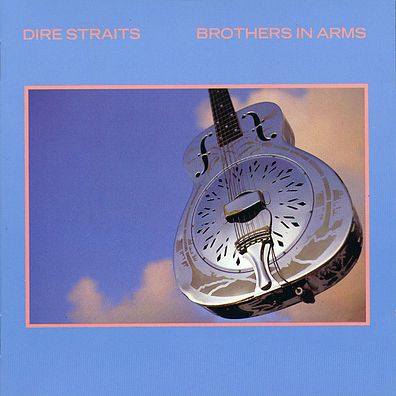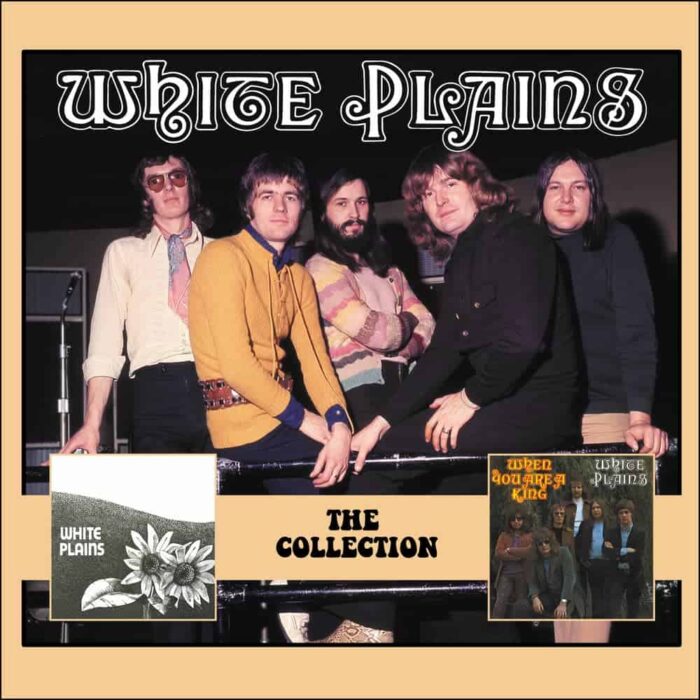The Article
Dire Straits’ Brothers In Arms
23rd January 2016

Label: Vertigo
Year: 1985
Brothers In Arms pushed the band’s established work into a pop setting and became immensely successful, quickly becoming the biggest selling LP in the UK during the 80s, a double Grammy award winning album in 1986 and spending nine weeks at No 1 in the US charts, while the single, Money For Nothing, was a worldwide No 1 single. Twenty years later, the LP won another Grammy as the best surround sound album.
While the album launched the group into the stratosphere and stardom, the exposure didn’t sit well with songwriter and lead singer, Mark Knopfler, “The preconceptions that people have about you, the rubbish that is written about you, you have to come to terms with it. You’ve really got to want to do this. You really can’t get upset and if you haven’t got a sense of humour then… you… are… dogmeat.”
The album was, in fact, recorded in George Martin’s tropical studio in Montserrat before a volcano partly destroyed the island, “I used to go down to the disco there. Now, you wouldn’t normally catch me down at a disco to save my life. But it was great, just great. There was a lot of rum down there. Then everyone would get into jeeps and drive flat out back to wherever you were. We were recording Brothers In Arms and, one night, we got bored so we timed each other to see who could drive up the hill the fastest to the studio. A stopwatch was taken out and everyone was screeching up the hill. Then someone didn’t show up and, eventually, we went down the road to look for them and they’d gone off the road and over the side and been stopped by a couple of trees. They got out, they were fine. Then Alan (Clark, keyboards) wanted to carry on and better his time so we said, ‘No, no, let’s quit while we are ahead’!”
Money For Nothing, supposedly the iconic video that celebrated MTV was anything but… As songwriter and lead singer, Mark Knopfler said, “At the time, they were running some Ads saying something like ‘I Want My MTV’ with the Police or somebody saying that. So I stole some notes from Don’t Stand So Close To Me, for which Sting’s publishers demanded 15-20% of Money For Nothing. That’s why he gets a co-credit for writing it but he didn’t actually write it, I just stole five notes. Sting happened to be on holiday in Montserrat, at the time. It was perfect because Sting was the perfect MTV creature. So I asked him if he would come up and sing it and he was there like a shot and sang beautifully on it.”
The fact that this small haul of notes was used in the song which prompted the lawyers to step in hasn’t caused problems for Knopfler, however, “Not at all, I don’t care about money or anything like that.”
The album is full of top quality tracks such as Walk Of Life that is dominated by an organ riff, “The organ has always been important to me via songs like Del Shannon’s Runaway and The Animals’ House Of the Rising Sun. Knopfler demanded the use of the real thing, though, not the increasingly fashionable organ ‘plug in’, “Despite all of the work done on a synthesiser, you can’t get the flexibility out of a Hammond program because the organ swoops and changes, interacting with the Leslie speaker. It’s like a saxophone, you can’t do it on a synth.”
The album can now be found within a new, full discography, six album box set, re-mastered for vinyl by Bob Ludwig, cut at Bernie Grundman’s studio and pressed at Pallas, Germany on 180gm vinyl. The CD running order of Brothers in Arms with full length versions of the tracks have been restored to the analogue version, now presented as a 2LP set (as well as a double vinyl of 1991’s On Every Street, incidentally). With all original artwork restored, the six albums are packed in a handsome box set slipcase. All come complete with download cards and are available as a strictly limited edition.
Whether you talk about Money For Nothing, So Far Away or Walk Of Life, Brothers In Arms benefitted from concise and focused writing that was topped by the utterly under-rated and atmospheric title track. The LP displayed an increased sense of how to write a perfect pop song, from a technical standpoint: the riffs, the melodies, it was all there.



Excellent album. I had somehow lost my 1985 CD, and bought a remastered version in the 1990’s. Listening to it I found the sound compressed (before I even knew that word in hifi terms), with less dynamics and air around the instruments. Figured it must have been my ears getting older or my memory of the original CD’s sound quality being wrong. Nope, using Discogs a couple years later I found the 1985 CD edition and immediately bought it. And lo and behold I didn’t remember wrong. It sounds absolutely amazing. Stay clear of any remastered editions., its not like they crush the sound (as on modern recordings), but the dynamic range is clearly limited.